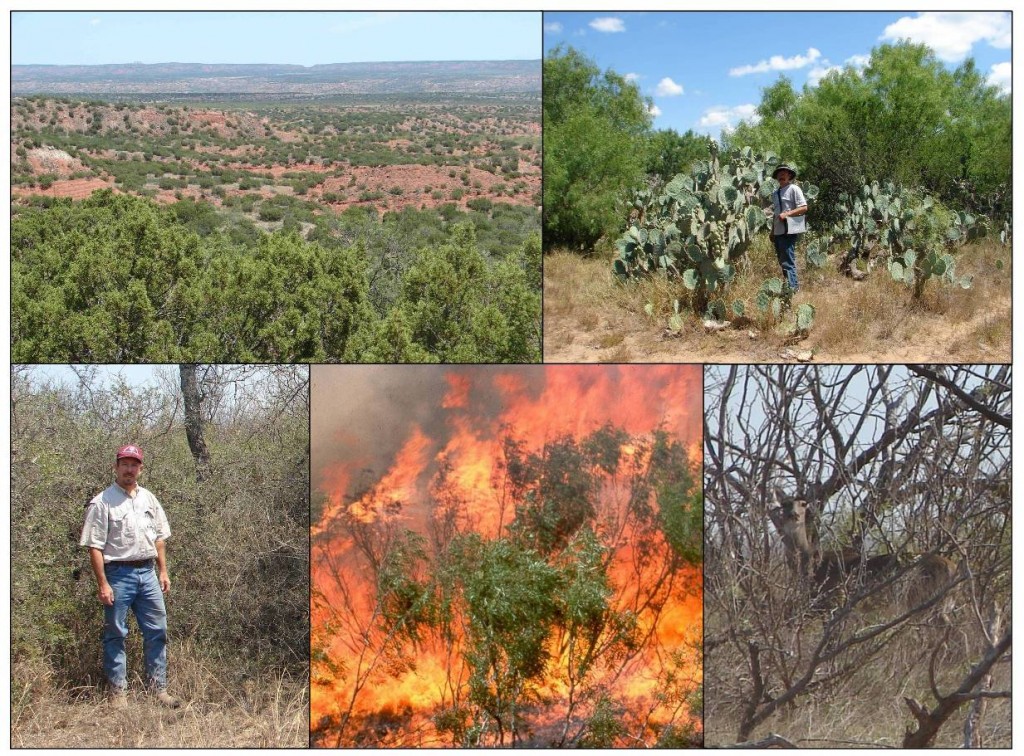Ecology, Management and Biomass Utilization
Tian Zhang, Research Assistant
INTRODUCTION
Woody plant or “brush” encroachment on grasslands and rangelands is a worldwide phenomenon. Woody plants can have harmful effects on rangelands by reducing grass species cover and diversity which can lead to increased erosion and reduced forage production for livestock. However, woody plants can often be beneficial for habitat for many wildlife species and are a major source of carbon sequestration in rangeland ecosystems. Knowledge and technology are needed to better understand these interactions and offer sustainable woody plant management solutions that accommodate overall ecosystem health and sustainable goods and services from these important lands.

Clockwise from upper left: Redberry juniper invasion in north Texas; Dr. Mustafa Mirik in mesquite and cactus south Texas; Deer in mesquite cover; Summer fire in mesquite north Texas; Dr. Jim Ansley in mixed brush in northern Argentina, near Santiago del Estero
RANGELAND WOODY PLANT RESEARCH GOALS:
Our overall aim is to develop sustainable options for mitigating the negative effects of woody plant invasion on grasslands and rangelands. Specifically our goals are:
- Determine the most effective and sustainable management options for converting mesquite and juniper thickets to savannas or grasslands
- Quantifying the competitive interactions between woody plants and grasses and better understand the most vulnerable points of grass responses to brush
- Develop potential of rangeland woody plants for bioenergy uses as a means of rangeland restoration.
LINKS
Ansley Publications
Image Gallery
RECENT EXTENSION ORIENTED PUBLICATIONS
Drivers of Vegetation Change in Texas (PDF)
Brush Sculpting Symposium (PDF)
Vertical Brush Sculpting (PDF)
CONTACT
940-552-9941